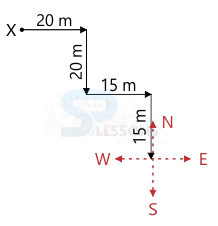 Introduction
Introduction
IB SA 2018-19 - Tier-I Examination, Written Exam of Objective type MCQs, has: a duration of 2 hours, a maximum score of 100 marks and consists of 4 sections, namely - General Awareness, Quantitative Aptitude, Logical/ Analytical Ability and English Language. The 4 sections are not separately timed. There is a Negative marking in IB SA Tier-I exam and 0.25 marks are deducted for each wrong answer. Candidates must clear the cut-off in all 3 sections to qualify for the IB SA Tier-II exam. The below sections give detailed information about IB SA Analytical Ability.
 Pattern
Pattern
| S.No. | Name of Test/ Section (not in sequence) | Type of test | Max. Marks | Duration |
|---|---|---|---|---|
| 1 | General Awareness | Objective | 40 | 2 Hours |
| 2 | Quantitative Aptitude | Objective | 20 | |
| 3 | Logical/ Analytical Ability | Objective | 20 | |
| 4 | English Language | Objective | 20 |
 Syllabus
Syllabus
[Click Here] for Tier-I Exam Syllabus
Note:
Penalty for Wrong Answers
There will be negative marking of 1/4 mark for each wrong answer. No marks would be awarded for an un-attempted question.
 Samples
Samples
Coding and Decoding
1. In a certain code language if the word SPLENDOR is coded as UFNJPHQJ, then how is the word DISASTER coded in that language ?
- A. FRUBUNGJ
B. HRUDNPJL
C. FRUBNPLH
D. HRDLJNLJ
E. FRDBNPLH
- A. ZWQZXVMG
B. GMVXZQWZ
C. RMVWYJWH
D. GMXVWRVZ
E. RMKLPRNG
-
A. ERM
B. ZS6
C. 4M8
D. QT7
E. 6*T
-
A. &
B. /
C. !
D. ?
E. None of these
-
A. If the data in statement I alone is sufficient to answer the question.
B. If the data in statement II alone is sufficient to answer the question.
C. If the data either in statement I alone or statement II alone are sufficient to answer the question.
D. If the data given in both I and II together are not sufficient to answer the question.
E. If the data in both the statements I and II together are necessary to answer the question.
-
A. Only I is true
B. Only II is true
C. Only III is true
D. All are true
E. None of these
-
A. Naresh
B. Virat
C. Nakul
D. Vaibhav
E. None of these
-
A. Nainika
B. Virat
C. Vani
D. Nakul
E. None of these
- A. Nainika
B. Vani
C. Viji
D. Nakul
E. Virat
-
A. Sister
B. Mother
C. Son
D. Daughter
E. Can’t be determined
- Input – sum 28 have 19 96 48 luck nice 78 rope.
Step I. have sum 28 19 48 luck nice 78 rope 96.
Step II. Luck have sum 28 19 48 nice rope 96 78.
Step III. Nice luck has sum 28 19 ropes 96 78 48.
Step IV. Rope nice luck have sum 19 96 78 48 28.
Step V. Sum rope nice luck have 96 78 48 28 19.
Step V is the last step of this rearrangement system of given input.
-
A. IV
B. V
C. VI
D. VII
E. None of these






